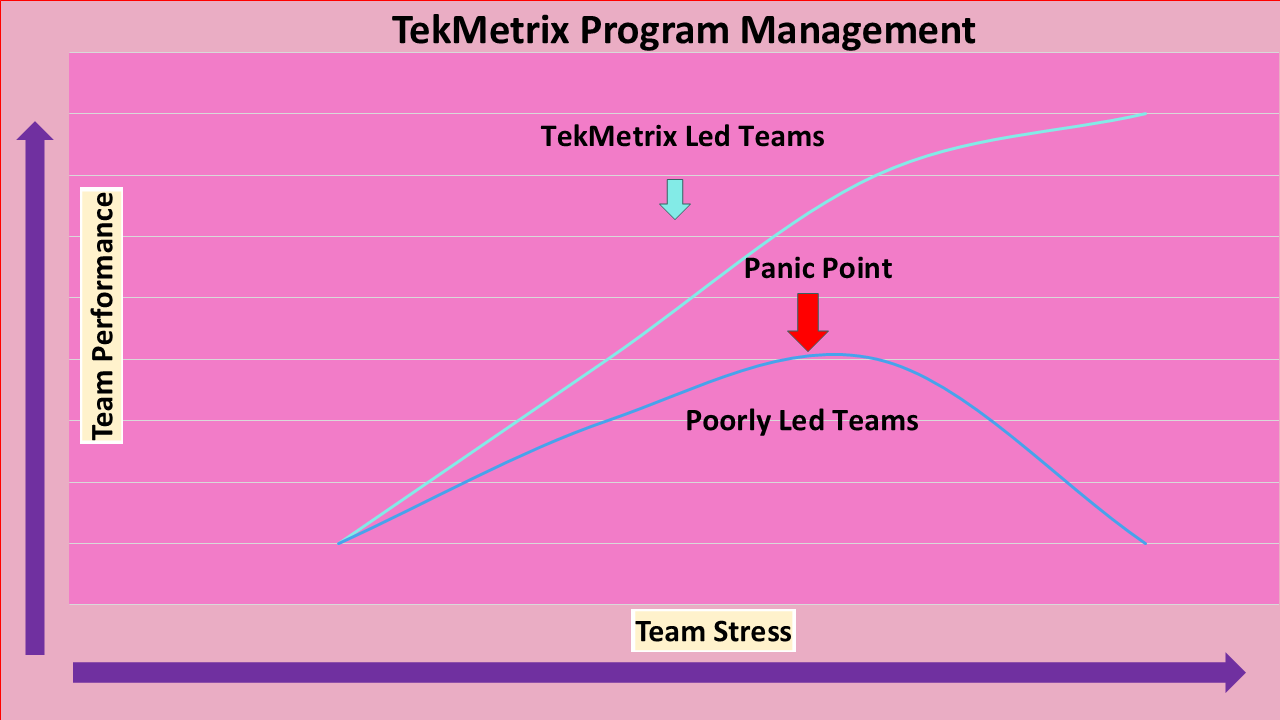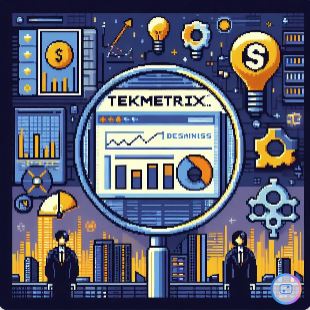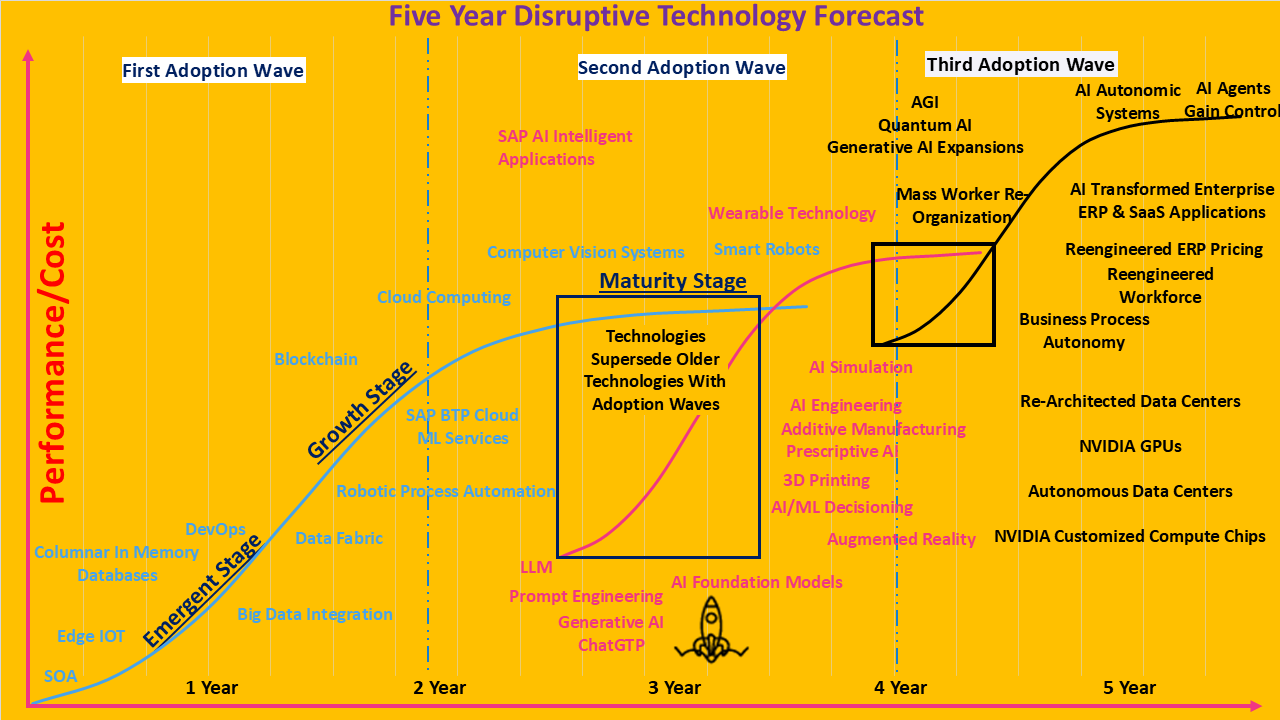Motivation
Most managers agree that growth and agility are the strategies for success as they move to market in the 21st century. Prior strategic initiatives of the middle 1990’s such as business process reengineering and corporate downsizing reduced costs and restructured our organizations permanently by eliminating duplicate functions and middle management. However, these initiatives and their incremental productivity
improvement will not sustain the profitability of our corporations in the 21st century - managers must
attack their competitors with growth and agility strategies while in the midst of shifting market segments requiring increasingly higher levels of customer service.
Managers recognize there will be considerable transformation of their markets well into the 21st century. Shifting markets will necessitate their corporations continuously adapt and innovate to grow profitably - and new organizational paradigms are needed in response to environmental and technological shifts. To grow, managers will need concentrated and unwavering customer focus in scope of products and services offered, competences and human resource skills, and in supporting information technology and infrastructure. Managers will restructure their organizations around customer value delivery processes and create new I/T competences in order to deliver new and differentiated products and customer service levels while beating their competitors to market.
Managers are exerting greater effort just to maintain their current competences needed to support the product and service offerings in their market segments - and developing new segments is no trivial task. The explanation may be ineffective I/T as a consequence of market shifts demanding new channel functions and higher service levels, or from vertical or horizontal integration as a result of strategic acquisitions, from insufficient coordination of I/T across the enterprise, or inefficient I/T application delivery processes due to a myriad of nonstandardized technologies used by the organization Rather than helping the manager successfully grow in the market place the lack of I/T vision and adequacy is working against business goals.
CFI/T
CFI/T is a customer focused information technology strategic planning process which enables the
manager to effectively define the scope of I/T products and services, competences and governance logic that is needed to survive, succeed and prosper in the 21st century. CFI/T eliminates the discontinuity between the managers ability to deliver customer value, and what the demands are - and creates a migration plan and business case to get there. It ensures that the manager’s portfolio of I/T products and services are aligned with and support the corporate scope of segmented customer products and service offerings, business competences and governance logic.
The CFI/T planning process, therefore, requires a synthesis and alliance of customer segment strategies, channel function, value delivery processes, and current I/T initiatives with I/T product and service scope, competences, application delivery processes and governance logic. Skills enhancement and acquisition needs, business case with metrics, standards and application portfolio transformation planning are key outputs of the CFI/T framework. The goal is to make short and long term decisions for deploying I/T resources and to build managers a migration plan for customer focused strategic alignment. Most important, the CFI/T migration plan is based on gap reduction requirements between customer segments and business competency needs, the current baseline of future I/T initiatives i.e., the present value of what the future I/T competency will be based on current I/T investments, and the managers current business and technical situation - CFI/T is a multi-faceted strategic planning process applicable to large industrials as well as smaller businesses.
Rather than plan individual projects CFI/T lets the manager address current and planned I/T initiatives as a portfolio of customer focused assets. Similarly to managing a new product portfolio for certain characteristics - targeted customers, total investment levels and risk attributes - CFI/T enables the management of I/T as a product and service portfolio to the defined needs of the customer. By treating I/T investments as a whole, overall investment levels, risk and flexibility to change can be managed and made to work for the good of the customer - and for the good for the enterprise.
CFI/T planning differs from traditional strategic planning systems in scope and focus. For the past 35 years managers have developed information systems to meet geographic, divisional or functional need. Few legacy systems provide customer focus and what has been created is not interoperable. These “islands” or vertical solutions and their associated architectures more often than not duplicate effort by deploying the same functionality and information differently and provide very little, if any, customer segment, channel or service delivery information. The CFI/T framework provides the logic for aligning customer focused business and I/T strategies and highlights the management challenges of business growth and effective I/T in the 21st century:
- how to achieve continuous alignment between business and I/T?
- inside versus outside?
- centralized versus decentralized?
- short-term versus long-term?
- business-led versus I/T-led?
- investment levels?
- governance and organizational design options?
- performance metrics?
Strategic Alignment
TSC defines strategy in terms of three components - scope, competence and governance - and view business and I/T strategies as parallel concepts. To achieve strategic alignment we begin by answering the question,
“What are the products and services that our company offers the customer segments in the marketplace? The answer to this question results in another, “ What are the distinctive attributes of our products and services that provide value to our customers, allowing us to outperform our competitors, and what business competences are required to create these attributes?
In answering these key questions we need to recognize the critical interdependence between business strategies and I/T strategies by focusing on their bi-directional impacts: how can I/T strategy support business strategy (e.g., through new technologies, systems, I/T competences, alliances, partnerships) and how can I/T strategy enable business strategy (e.g., through new products, markets, delivery channels, business competences, alliances, partnerships)?
The scope of I/T products and services defined during strategic alignment can be either internally or externally focused. An example of an I/T product and service for an internal customer is a corporate performance and reporting system and the on-going support to maintain its currency. An example of an I/T product and service for an external customer may be an electronic commerce function for order fulfillment over the Internet. For most companies I/T products and services will play an increasingly significant roll internally, as efforts to become a customer focused organization continue to accelerate to meet shifting market needs and externally, as it seeks revenue growth through new and expanding customer segments.
Business Value
The results of the strategic alignment process delineates the foundation for the development of an I/T strategic plan that delivers customer value in a timely manner. Besides being a clearly articulated statement of the managers business situation and strategy - and a view of the current state of future business and I/T initiatives, a CFI/T plan includes a segmented view of the managers business with analogous value propositions, delivery business processes and associated competences.
Delivery business processes are scored against the segmented value propositions to understand their relative value to the business both for today and the future. Ratings typically used to prioritize the usefulness of the delivery processes are degree of support against the segment propositions and the relative impact of the process on the segment including such factors as:
- ability to provide timely product and service information to the customer
- ability to customize the product or service for the customer
- degree to which the customer emphasizes product integrity and reliability
- ability to provide an assortment of products and services
- customer demands for product availability
- post sales service requirements
- efficiency of manufacturing, transporting, storing and supplying products and services to the end users
Understanding relative importance of the value delivery business processes is critical to understanding I/T implications and priorities. As the manager plans the I/T applications portfolio it is done so relative to the value delivery business processes - both existing and planned processes for the future e.g., the company may enter a new retail segment next year and requires a direct sales force as the delivery channel. The business blueprint is complete with a thorough, explainable high-level view and relative ranking of the key business processes providing customer value - those processes in place and those needed to realize the managers market segment strategies - and the I/T implications, required capabilities and enablers of the business processes.
Technology Potential
The potential of I/T to improve the ability of the manager to deliver value is fundamental to the strategic planning process. I/T potential is determined by assessing the means with which technology can be used to leverage the working performance of the business processes. This is a brainstorming exercise meant to stimulate conversations about what is possible with information technology as it relates to a business process. It explores and benchmarks what others have done or their thinking about what is possible. For this reason, technologies are reviewed as:
- proven by others to have significant and positive impact on business value
- demonstrated but no evidence to prove a “significant” impact
- an idea to be considered which is evolving in the next 5 years
- an idea... something not to be dismissed too soon
Typical technologies evaluated are:
- electronic commerce
- internet / intranet / EDI
- call centers
- enterprise applications
- groupware
- executive information systems
- modeling / simulation
- data warehouse
- data mining / pattern recognition
- virtual reality
- speech recognition
- portable computing
- remove access - ISDN
- cellular phones / PCN
- video conferencing
- geographical information systems
- optical character recognition / imaging
- global positioning
- multimedia
- wireless computing
- fuzzy logic
- neural nets
- CAD / CAM
- on-line services
- computer animation
- object oriented design / development
- CD-ROM
Technology choices are merged into a strategic grid and classified by business process to create a relative ranking. This grid represents the strategic value of the business process versus the possibilities of enabling the business process using information technology.
The results of the strategic grid analysis are summarized using the following four categories:
- eliminate
- reassess
- research
- apply
Technologies that fall in the eliminate category are candidates for elimination from the strategic plan. These technologies may never have been necessary or may have become obsolete because the market segments have changed. Since the value of the business process is low and the potential to improve the performance of the business process is low why should the manager invest in I/T for this process?
Technologies that fall in the reassess category may have been implemented by technician’s which the users failed to support or technologies which were in advance of business process needs. They should be reassessed to determine if they should be eliminated from the strategic plan or be applied against a different more value adding value process.
The research category of technologies represent potential business exposures. If the technologies fail to deliver on their promise then the performance of the business process will suffer. Technological investment opportunities are likely to be identified from these systems categories. Therefore it is likely that the manager will continue with research, engineering and design of new technologies to improve the cost performance systems supporting these business processes.
Technologies in the apply category should be given priority for any expenditures for maintenance or applications engineering to sustain the benefits or competitive advantages from these systems. Failure to adequately maintain and apply proven technologies may cause the business process to become a business exposure.
Systems Adequacy
Once business value and the potential of I/T is understood by the manager then a recognition the current application and technical environment is needed as input to the CFI/T plan. Key questions to address are:
- what is the value of the business process?
- how capable is the performance of the business process?
- how well is I/T contributing the to ability of the business process to deliver value?
- how well is I/T managed and governed?
- what are the guiding technology principles?
- what are the current I/T expenditures and initiatives?
The assessment of systems adequacy is done as objectively as possible and with the aid of a strategic grid - the 4 R’s of systems adequacy. First, current applications are inventoried and associated to the business process that they support. Then, the relative performance of each application is assessed by applying subjective measures and soliciting input from both the functional users and I/T organization.
Technical adequacy is how well the application leverages available technologies. Cost drivers such as database design, security, documentation, application efficiency, problem recovery and support personnel are used as technical adequacy measures. Other technical adequacy measures include the programming language, hardware platform and support for the year 2000.
Functional adequacy includes how well the application does what it needs to do while supporting its business process - from the users perspective. These measures include how easy it is for the user to learn the system, reliability, customer data currency, security, ease of special requests, data accuracy and how responsive the application is to market, technological and environmental and organizational shifts.
The technical and functional capability of applications make up the adequacy of the system in its current state. The results of the grid analysis are summarized using the following 4R’s:
- refine
- replace
- redesign
- replatform
Applications that fall in the upper right quadrant have high performance - both from a technological and functional perspective, and no corrective action or replacement may be required - only the continuous improvement and refinement of these applications.
However, if applications are characterized in the lower left quadrant as having low functionality and high technical costs the company may want to reduce its dependence on these applications by replacing them after a further assessment to determine the true business process and value delivery need.
In the lower right quadrant is the redesign category which implies a high technical adequacy and a low functional capability. These applications may be over engineered or are not in alignment with the business process for customer value delivery. Investments in I/T projects may be needed to improve the functional capability of the applications - should the value of the business process warrant the investment.
Finally, applications that fall in the upper left quadrant have a high level of business process capability - functional adequacy - but represent high cost of ownership from a technical perspective. Projects to improve the cost profiles of these applications, replatforming, should be undertaken - again, depending on the value of their associated business process.
Baseline Initiatives
One of the first steps in the development of a CFI/T plan involves the development of a thorough, explainable view of the customer segments and value delivery processes - those in place as well as those needed to realize the managers customer value propositions, the information that supports them and their key characteristics. The CFI/T planning process accomplishes this by developing strategic alignment and defining business value.
Baseline initiatives are those projects that the manager has funded and are underway - both from a business and I/T perspective. When implemented they represent a future state of business i.e., customer segments, value proposition and delivery processes and a future supporting I/T architecture and infrastructure. From a CFI/T planning perspective the “current business and technical future state” needs to be compared to the “business and technical vision” to determine if there are any gaps between the future state and the vision. These gaps along with the vision i.e., strategic alignment, business value, I/T potential and systems adequacy are used as input into the overall CFI/T planing process.
CFI/T Planning Principles
The diagram below, although fairly simplistic in its orientation, provides a high-level view of the CFI/T planning framework.
- Systems adequacy and I/T potential refer to the “current state of business” including how capably the managers business processes add value, i.e., business value, how technology and applications are used, where they are deployed, how the managers business is organized and governed from business and I/T perspectives, systems adequacy and capabilities of current solutions.
- “Current initiatives” are ongoing or planned I/T projects, including current design and development efforts, joint ventures, and program efforts.
- The “current future state” is where the manager will end up if the current plan and approach to implementation remains unchanged.
- The “desired future state” is where the manager will end up if the business vision were completely implemented.
- The “vision gap” is the difference between where the manager is headed and where the manager is going
- The “necessary initiatives” are the efforts required to move the manager toward its vision. They are the basis for a “transition plan” to change the manager’s business toward its future.
This framework is iterative because the desired future state is a moving target due to market, environmental, organizational and technical shifts in the managers business. By assuming the view that CFI/T planning drives the desired future state, the interations become overall refinements to the I/T strategy. Coordination between the development of architecture releases and the evolution of the transition plan includes adding initiatives and refocusing or halting current initiatives. It also ensures that consistent views of the managers business are delivered together. To be effective this framework must deliver value through each interation, and be used and accepted by managers and business leaders.
Strategic Architecture Planning
Investment opportunities and strategic architecture planning are derived from an understanding of customer segments, business value, systems adequacy and the potential of information technology to improve the performance of business processes. These grids represent where the manager should invest in I/T to obtain strategic advantage. It defines what needs to be done to the high priority items - customer focused business processes - to deliver on what the manager has outlined during the strategic alignment process. Most importantly, investment planning works to close the gap between those investments which define the current future state of business and I/T capabilities and the CFI/T strategic plan. Investment opportunities outline a prioritized list of target applications to undertake to reduce the difference between the scope of the CFI/T strategic plan and those I/T initiatives which define the current future state of the business. - and notes the dependencies among them.
Investment planning results from a combination of the business value versus systems adequacy and business value versus required effort matrixes - that is - what needs to be done and what effort is required. Effort includes everything from actual cost and time to how much change the organization must endure.
The sum of the target applications forms the managers customer focused technology and application strategy. This planning effort focuses and aligns efforts on the most critical tasks - the products and services for the customer segments, competency and governance logic with I/T products and services, competency and governance logic.








